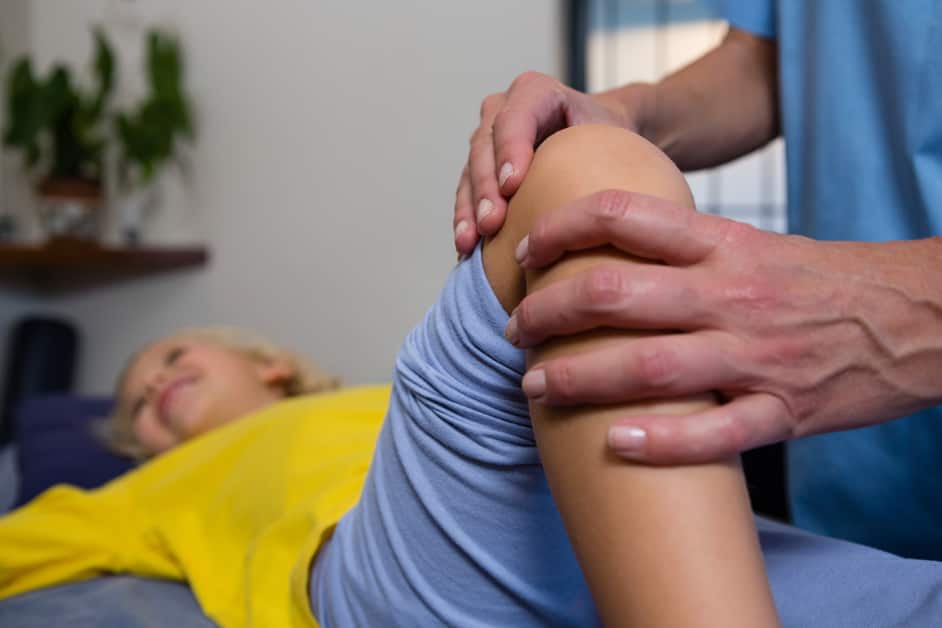Overview of Knee Arthritis
Knee arthritis is an issue that damages the knee joint, causing suffering and stiffness. To manage the pain related to knee arthritis, there are many options for treatment. This article will examine physical therapy’s role in handling knee arthritis pain.
Types of Arthritis
Knee arthritis is an uncomfortable condition. It results from inflammation in the joint. It’s frequent among older adults but can happen at any age due to injury or inflammatory diseases. The middle layer, the cartilage, mostly gets affected, but bones, ligaments, and muscles can too.
There are various types of arthritis causing knee pain, swelling, and stiffness:
- Osteoarthritis is caused by joint damage over time, leading to joint tissue and cartilage deterioration. It usually shows up in people over 50.
- Rheumatoid arthritis is an inflammation-based arthritis when your immune system attacks cells in your joints. It’s more likely with people aged 30-60 and usually women.
- Posttraumatic Arthritis can appear after trauma to the knee joint, such as an acute fracture. Degeneration can happen to all layers of cartilage and bone in the joint area.
- Septic arthritis is caused by a bacterial infection entering through cuts or scratches near a joint. It spreads quickly and needs to be diagnosed via needle aspiration.
Causes of Knee Arthritis
Knee arthritis is a condition that involves the deterioration of cartilage in the knee joint. It usually affects people over 40 years old, but can happen to any age due to various causes. Age and genetics can increase the risk of developing arthritis, but injury or illness can also be responsible.
Common causes of knee arthritis include:
- Aging – Loss of cartilage with age can cause less shock absorption, leading to more wear on the joint and then arthritis.
- Repetitive activities – Running and using stairs require lots of force on the knee joint, which can cause damage in time and lead to arthritis.
- Previous Injury – Trauma or injury from falls or car accidents can put too much force on the leg bones, causing tears in cartilage or damage to ligaments, leading to cartilage deterioration.
- Overuse – Too much use of joints in sports or hard work can increase stress on them, leading to symptoms similar to knee osteoarthritis.
- Obesity – Excess weight puts strain on any weight bearing joints and raises the risk of developing knee osteoarthritis.
Physical Therapy for Knee Arthritis
Physical therapy is a must when it comes to managing knee arthritis pain. It is used with medications, lifestyle changes and other treatments. To reduce pain and improve mobility, doctors usually recommend physical therapy as an essential part of treating knee arthritis.
Here, we will talk about the role of physical therapy in knee arthritis pain management. This includes the different types of physical therapy, the advantages and potential risks:
Benefits of Physical Therapy
Physical therapy can be helpful for knee arthritis. It can reduce pain and improve range of motion. It can also strengthen quadriceps muscles, increase range of motion, improve balance, correct movement faults, and teach appropriate exercise techniques.
Plus, physical therapists can provide education on proper nutrition and lifestyle techniques. It’s important to follow their advice to avoid activities that could be harmful. Physical therapy is an important part of managing arthritis pain in the long-term.
Physical Therapy Exercises for Knee Arthritis
Physical therapy is key to help those with knee arthritis. Research has shown that exercises reduce pain, strengthen muscles, and improve range-of-motion plus functioning.
Examples of exercises are:
- Strengthening Exercises – These work the muscles around the knee to give it more support. Machines, free weights and resistance bands are used.
- Stretching Exercises – This helps increase flexibility in the ankle, knee, and hip, plus improves posture. Types of stretches include hamstring, quadriceps, and calf stretches.
- Aerobic Exercise – Walking and swimming strengthen muscles, improve range-of-motion and increase endurance. Plus, regular aerobic exercise releases endorphins which act as a natural pain reliever.
Physical therapists customize programs to the individual’s needs. They make sure it is safe and will work to improve functioning levels.
Other Treatment Options
Treating knee arthritis pain has many options, besides physical therapy. Assisting devices, medications and surgeries are a few of them. Speak with your physical therapist or doctor before settling on the right treatment.
Let’s take a look at the other treatments for knee arthritis pain:
Medication
Meds can be used to treat mental health issues, like depression and anxiety. Generally, they’re prescribed by psychiatrists or primary care providers, and must be taken as directed. Common meds include SSRIs, tricyclic antidepressants, and MOIs.
Additionally, there are other treatment options. Psychotherapy helps you explore the causes of your condition, and includes cognitive-behavioral therapy which helps you recognize negative thinking patterns. Mindfulness meditation, yoga, and lifestyle changes like better sleep and quality time with family, may also help reduce stress and stabilize moods.
Surgery
Surgery can be a blessing for those with severe arthritis. It can come in two forms: arthroscopy or joint replacement.
- Arthroscopy is used to detect, clear out, or make small changes within the knee joint.
- Joint replacement is for cases where disability is a major issue. The procedure involves taking away the broken joint and putting in a prosthetic.
Recovery time will depend on the person and the type of surgery. To get ready and to make sure outcomes are good, physical therapy alongside medical care might be suggested before and after surgery.
Conclusion
Physical therapy is necessary for managing knee arthritis pain. It reduces inflammation and protects the joint tissue from damage. It also strengthens muscles and increases flexibility, thus reducing pain and other symptoms.
A combination of lifestyle changes, medication, and physical therapy is needed for successful long-term management. Therefore, physical therapy has an important role in knee arthritis pain management – but it must be used with other treatments.
Summary of Physical Therapy for Knee Arthritis
Physical therapy is key for managing knee arthritis pain. Therapists help restore proper alignment and movement, reduce pain, and improve strength and balance. Special techniques reduce swelling and therapists provide education on self-care. They may also recommend massage to reduce stress, increase flexibility, and enhance circulation. Lifestyle modifications, like weight loss, can lessen arthritis symptoms.
Exercise is crucial for keeping muscle tone, improving range of motion and flexibility. Stretching exercises and exercise focusing on range of motion or strength can be combined with physical therapy for better muscle control around the arthritic knee joint. With a tailored approach of physical therapy, lifestyle modifications, and exercise, individuals can find relief from knee arthritic pain.
Frequently Asked Questions
Q1: What is physical therapy?
A1: Physical therapy is a type of healthcare that helps people with mobility issues, pain, and injuries. Through physical therapy, patients can be taught how to move and exercise safely, as well as how to reduce pain and improve overall health.
Q2: What role does physical therapy play in managing knee arthritis pain?
A2: Physical therapy plays an important role in managing knee arthritis pain. Physical therapists can help patients develop an exercise program that strengthens the muscles around the knee, increases range of motion, and helps alleviate pain. Additionally, physical therapists can provide manual therapy, such as massage and joint mobilization, to reduce pain and improve mobility.
Q3: How often should I see a physical therapist for knee arthritis pain?
A3: The frequency of physical therapy sessions will depend on the severity of your knee arthritis pain. Generally, it is recommended to start with 2-3 sessions per week and then adjust depending on your progress. It is important to discuss your plan of care with your physical therapist.





